
| Publisher: | Tin House Books | |
| Genre: | Short Stories (single author), Fantasy, Contemporary, Literary, Fiction | |
| ISBN: | 9781951142728 | |
| Pub Date: | August 2021 | |
| Price: | $24.95 |
| Starred | Fiction |
by Jo Lloyd
In Something Wonderful, a debut collection of nine compact stories that all take place in the Welsh countryside, Jo Lloyd captures moments in history through fleeting but rich instances of intimacy. In "Butterflies of the Balkans," two women go to adventurous lengths to pursue the ephemeral beauty of rare butterflies in the lead-up to World War II. "My Bonny" is the story of a widow raising her child following her husband's death at sea, told through the perspectives of various family and community members. In "Deep Shelter," a son grapples with the memories of his estranged and eccentric father in the aftermath of losing a gift from him in a bomb shelter.
Lloyd's crisp, clear-eyed prose manages to avoid too much sentimentality while still conveying the deeply felt reality of circumstances that are often hard to imagine. Although each story is written with an eye toward realism, the atmosphere and Lloyd's impeccable scene-setting often lean toward the gothic and fairytale-esque, in order to bring a sense of wonder to each piece. Nevertheless, grounded characters and emotions remain at each story's core. For example, "The Invisible," which focuses on a tight-knit community's imaginings of some nearby but elusive upper-class residents, uses its more abstract plot elements only as a means through which to convey emotional resonance. A meditative literary debut, Something Wonderful demonstrates how the magnificence of everyday relations continue to transform, even in the face of some of humanity's darkest and most cataclysmic moments. --Alice Martin, freelance writer and editor
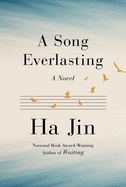
| Publisher: | Pantheon | |
| Genre: | Literary, Political, Asian American, Fiction | |
| ISBN: | 9781524748791 | |
| Pub Date: | July 2021 | |
| Price: | $28 |
| Fiction |
by Ha Jin
Powerlessness pervades Ha Jin's perceptive A Song Everlasting, as his protagonist leaves fame and familiarity in one country to flee toward ambiguity and adaptation in another. Freedom, Yao Tian reasons, is his driving motive. National Book Award-winner Jin (A Map of Betrayal), notable for empathically crafting lives from meticulously observed details, creates an antihero caught between China and the U.S.
Tian sings lead tenor in a Chinese company renowned nationally and abroad. His wife, Shuna, is a rising university history professor; their 13-year-old middle-grade daughter, Tingting, is about to apply for entry into a tony Beijing prep school. At 37, Tian's career seemed impressively satisfying, his and his family's lasting comfort all but guaranteed.
Following a scheduled company performance in New York City, Tian encounters an old Beijing friend. Yabin has emigrated to the U.S., and presents Tian with a lucrative singing engagement--this time solo, as part of a concert to celebrate Taiwan's (not China's) National Day. The generous fee, Tian realizes, would help offset Tingting's anticipated tuition increases. Tian's director isn't pleased, but he's not forbidden. And so Tian stays, performs and returns home. The disciplinary consequences are immediate. But when he's asked to surrender his passport, Tian uses all his connections to flee to New York, initially convinced that Shuna and Tingting will eventually join him. Expectations, however, are not reality.
Jin's narrative here isn't his strongest; Tian's meandering, passive acceptance grows cumbersome. For Jin's most devoted readers, however, his signature ability to engage and expand his characters through acute, forthright observations will not disappoint. Once again, Jin provides a meaningful everyman tale beyond borders and cultures. --Terry Hong, Smithsonian BookDragon
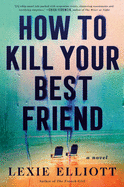
| Publisher: | Berkley | |
| Genre: | Psychological, Crime, Suspense, Thrillers, Fiction | |
| ISBN: | 9780593098691 | |
| Pub Date: | August 2021 | |
| Price: | $27 |
| Mystery & Thriller |
by Lexie Elliott
A mysterious death is only the beginning in How to Kill Your Best Friend by Lexie Elliott (The French Girl), a gripping work of suspense.
Georgie and Lissa were always the closest of their tight-knit group of friends from the college swim team, but Georgie wasn't on the last trip when they all got together, and then Lissa drowned. Her drowning was incongruous, considering that Lissa was the strongest swimmer among them, but there are local legends about the dangers of Kanu Cove on the island where Lissa and her husband owned a resort. Now her friends have gathered at the resort for her memorial. Georgie and Bron, another member of the group, who secretly had an affair with Lissa's late first husband, begin receiving strange notes and other threats. The vacationers who are not part of their group begin to leave the island, the weather turns threatening and the friends come to understand that the secrets they are uncovering might mean that Lissa's drowning was not an accident.
Elliott's book is an intricate, twisting story. Georgie kept Bron's secret about the affair, but she had suspicions about Lissa dating back to her first husband's death. The intensity of Georgie and Lissa's bond has a dark streak; no matter what Georgie thought Lissa may have been hiding, the only thing she would not consider is betraying Lissa. The heightened emotion of their relationship ramps up the suspense in this gothic-tinged, breathtaking thriller. --Kristen Allen-Vogel, information services librarian at Dayton Metro Library
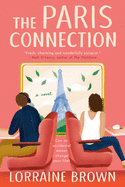
| Publisher: | Putnam | |
| Genre: | Women, Romance, Contemporary, Fiction | |
| ISBN: | 9780593190562 | |
| Pub Date: | August 2021 | |
| Price: | $16 |
| Starred | Romance |
by Lorraine Brown
Hannah never expected that a train separating her from her boyfriend would lead to her finding (or re-finding) herself. But that's exactly what happens in Lorraine Brown's charming debut novel, The Paris Connection. Hannah and Si are traveling by train to his sister's wedding in Amsterdam after a few days in Venice. Unable to sleep, Hannah switches cars midway through the journey and wakes to find that the train has uncoupled and she's on the half speeding toward Paris. Frustrated--not least by Léo, an annoyingly handsome French musician who blames Hannah for his own detour--Hannah must navigate an unfamiliar city without her luggage or phone. As she and Léo spend the day hopscotching around Paris, their conversation helps Hannah confront some painful past memories and make a decision or two about her future.
Brown's breezy narrative, told in Hannah's first-person voice, takes readers through the irritations of travel snafus and the joys of spending a day in a world-class city. Léo takes Hannah up the Champs-Élysées and insists she see Sacré-Coeur, but he also ducks into a café to buy her a pastry and shows her a few hidden parks. Readers will enjoy seeing Hannah slowly start to savor her unexpected day out, and root for her as she begins to rethink her dedication to both Si and her dead-end office job.
Light and sweet, with plenty of evocative Paris details, Brown's debut is as enjoyable as the confections beckoning to Hannah from the windows of Léo's favorite pâtisserie. --Katie Noah Gibson, blogger at Cakes, Tea and Dreams

| Publisher: | Grand Central Publishing | |
| Genre: | Biography & Autobiography, Women, Family & Relationships, Death, Grief, Bereavement, Personal Memoirs, Asian & Asian American, Cultural, Ethnic & Regional | |
| ISBN: | 9781538716328 | |
| Pub Date: | August 2021 | |
| Price: | $28 |
| Biography & Memoir |
by Kat Chow
So much of debut author Kat Chow's magnificent memoir, Seeing Ghosts, is about absence--the yawning loss of something that was once there, that should still be here. In carefully arranged pieces, anecdotes laid together like mosaic tiles, Chow unleashes the power of her own grief after the loss of her mother.
Florence, once known as Bo Moi, was a sharply funny and fascinating woman, and Chow draws her on the page with such tenderness that readers have little choice but to love her, too, despite the ensuing agony of her death. We watch her alongside her children, Steph, Caroline and Kat, as she drops emblematic memories into their lives, leaving a trail of breadcrumbs for them to trace back when she eventually must leave them. One such breadcrumb is a visceral moment in which Florence jokes that, once she dies, she'd like her daughters to stuff her, so that her taxidermied body might watch over her little ones for all time. The vision haunts Chow for decades to come, and it provides the initial scaffolding for this book.
But Seeing Ghosts explores absence far beyond the loss of Florence to a horrible cancer. Chow excavates her own history with ruthless honesty and deep respect. Absence appears again and again, in the form of her family's continuous financial debt; the silence between Chow and her father; the answers she still feels she owes her mother; the ancestral connections in Cuba and China that have grown faded and confused with time; the vast legacy of Asian American men and women lost to a corrupt system. Chow writes about her brother, who died as an infant. She writes about Yung Wing, one of the first Chinese Americans to graduate from Yale. She writes about her father's arrest and the subsequent bail payments. She writes about Neva Dorsa, a woman who built a window into her husband's coffin so she could look in and see his corpse. The brilliance of Seeing Ghosts is that these fragments all tie together naturally--readers never pause to ask why Chow is bringing them under one roof, for they've learned to trust she'll reveal the connections in time.
It would be easy to characterize Chow's book as yet another grief memoir, another tale of how to wade through the years of loneliness and struggle after the loss of a parent. That would be selling the story short, not to mention failing to grasp its scope. Seeing Ghosts is about Florence, yes, but also about everything Florence's family means--a patchwork quilt of Chinese Americans making sense of the amorphous American Dream. Chow does this most skillfully in scenes with her father, a man who struggles with happiness, whatever that means, yet seems desperately to want. He wants a restaurant, so he opens Lotus Garden, which shutters due to financial troubles. He wants to make money, so he becomes a landlord for a set of buildings in varying degrees of disrepair. He wants a fish on his wall, so he attempts to preserve and taxidermy one himself. He wants to find his father's remains, so he travels to Cuba to sort through seemingly endless boxes of bones. Yet he either cannot or does not want to name the systemic injustices set against him, and though this frustrates Chow as she interviews him, it also fascinates her. So she keeps pulling on the thread. And pulling. And pulling.
This resolve to tackle the frustrating truth of her history--and, by proxy, Asian American history--is what makes Seeing Ghosts sing. Readers don't need to delve through Chow's biography to know she's a journalist, one who formerly worked with NPR's popular podcast Code Switch. She brings a reporter's keen eye to her own lineage, and never tries to protect herself. She reveals her own failures and flaws just as earnestly as her family's, and that steadiness in the face of numerous identity crises gives Seeing Ghosts a surge of power.
Chow's memoir is not an easy book, which doesn't mean it's not an easy read. The prose is tight and lovely, one page and one fragment intertwining with the next. The experience of reading it is enjoyable, despite the subject matter. But that is where Chow's journalistic skill triumphs: she feeds readers an impossibly challenging topic through beautifully seasoned bites. The result is that readers turn the last page having swallowed a delicious meal, only to realize there is so much more for them to digest. Seeing Ghosts is a book that will leave readers thinking, mourning, probing the absences and injustices of American life, equally haunted and soothed by ghosts. --Lauren Puckett
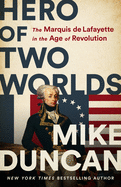
| Publisher: | PublicAffairs | |
| Genre: | Biography & Autobiography, United States, Europe, Revolutionary, Revolutionary Period (1775-1800), History, France, Historical | |
| ISBN: | 9781541730335 | |
| Pub Date: | August 2021 | |
| Price: | $30 |
| History |
by Mike Duncan
Fans of United States and French history alike will be captivated by Hero of Two Worlds: The Marquis de Lafayette in the Age of Revolution, the engrossing biography by Mike Duncan (The Storm Before the Storm).
The career of the Marquis de Lafayette started with the sort of education typical for a young nobleman with more land than cash in mid-18th-century rural France. After he made a name for himself in the American Revolution, he was involved in the French Revolution and then the overthrow of the Bourbon dynasty in the Revolution of 1830. His adventures in America began with a representative in France who overreached in offering commissions. Lafayette's departure was opposed by his family and the king, but he returned a celebrated hero.
Although he is occasionally overly fond of repeating the title of the book, Duncan paints a thorough and nuanced portrait of his subject. He highlights Lafayette's long dedication to abolition and his continued pressuring of George Washington to free those he enslaved, but does not overlook Lafayette's rather more indifferent attitude toward slavery in his early years. This includes a never-executed plan to raid British colonies in the Caribbean with an American warship and cover the cost by selling the enslaved people they anticipated capturing there. Lafayette's principles developed in a rapidly changing era, but once he found them, he clung to them no matter the personal cost. Duncan's absorbing account of Lafayette's life will enthrall devotees of United States and French history. --Kristen Allen-Vogel, information services librarian at Dayton Metro Library
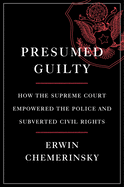
| Publisher: | Liveright | |
| Genre: | Law, Discrimination, Federal, Judicial Power, Administrative Law & Regulatory Practice, Government, History, African American & Black | |
| ISBN: | 9781631496516 | |
| Pub Date: | August 2021 | |
| Price: | $27.95 |
| Political Science |
by Erwin Chemerinsky
Following the murder of George Floyd by a Minneapolis police officer on May 25, 2020, millions of Americans took to the streets to demand both accountability and reform to prevent similar acts of police brutality. But as Erwin Chemerinsky, constitutional scholar and dean of the University of California, Berkeley, School of Law, persuasively argues in Presumed Guilty, those efforts may be stymied by a body of constitutional law that has erected a formidable bulwark against such efforts.
Chemerinsky (We the People) sets out with the goal of telling the "story of the Supreme Court's failure to enforce salient parts of the Constitution and to limit police misconduct." He undertakes a comprehensive but readable survey of more than half a century of Supreme Court jurisprudence and explains how the court has "consistently empowered police and legitimated the racialized policing that especially harms people of color." Even the Warren court, which broadened protections against unreasonable searches and recognized the right to counsel in non-capital cases, among other expansions of constitutional protections in the 1960s (the last time the court had a liberal majority) decided a case in 1968 that still serves as the justification for stop-and-frisk policies that Chemerinsky says "contributed significantly to race-based policing."
Though he's clear-eyed about the obstacles such efforts face, Chemerinsky offers a package of legislative reforms, and he suggests that litigating under state constitutions, thereby circumventing Supreme Court review, may turn out to be a more fruitful legal strategy. In either case, it appears the road to meaningful reform will be a long and difficult one. --Harvey Freedenberg, freelance reviewer
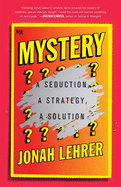
| Publisher: | Avid Reader Press | |
| Genre: | Psychology, Popular Culture, Social Psychology, Social Science, Emotions | |
| ISBN: | 9781501195877 | |
| Pub Date: | August 2021 | |
| Price: | $28 |
| Psychology & Self-Help |
by Jonah Lehrer
Millions of people love attending a magic show or watching reruns of Law & Order: SVU, and there's a reason: humans are hard-wired to love mysteries, and Jonah Lehrer (How We Decide; Proust Was a Neuroscientist) illuminates why in Mystery: A Seduction, a Strategy, a Solution. Filled with examples both big and small--including a Bletchley Park codebreaker and a man who cracked the Canadian lottery ticket system--Mystery explains how mysteries catch our fancies. As Lehrer says, "It doesn't matter if it's Hamlet, God, or a Marvel superhero--it's their mysteries that make them interesting."
The book's chapters showcase different aspects of mysteries--such as unpredictable characters, discordant fonts, the "mystery box" that explains the popularity of unboxing videos on YouTube. By breaking down the various elements of mysteries, Lehrer showcases why the human brain is unable to resist a mysterious hook. The element of surprise is compellingly seductive.
Mystery is a fascinating blend of pop culture, neuroscience and history, creating a seamlessly entertaining story. Applicable to everyone from writers of whodunits to baseball coaches, the lesson of Mystery is indelible: predictability is boring. And because the world is full of ever-increasing uncertainties, people will continue to turn to art to solve mysteries for them, to show them both what is possible and what isn't. Sure to appeal to both mystery readers and lovers of science, Mystery: A Seduction, a Strategy, a Solution is a delightful blend of real-life intrigue and fictional mystery tropes. --Jessica Howard, bookseller at Bookmans, Flagstaff, Ariz.

| Publisher: | Algonquin | |
| Genre: | Women, Family Life, Literary, Marriage & Divorce, Fiction | |
| ISBN: | 9781643751467 | |
| Pub Date: | August 2021 | |
| Price: | $16.95 |
| Now in Paperback |
by Peace Adzo Medie
Afi lives in a humble home in the Ghanaian city of Ho with her mother. Since Afi's father died, they are beholden to local businesswoman "Aunty" Ganyo for their jobs, their home and basic necessities like flour. So when Afi's marriage is arranged to Aunty's son Eli, she knows it is an honor, although she feels some trepidation at marrying a man she does not really know. "Elikem married me in absentia; he did not come to our wedding." And so her new life begins inauspiciously in Peace Adzo Medie's arresting first novel, His Only Wife, a Reese Witherspoon X Hello Sunshine Book Club Pick, a New York Times Notable Book of the Year and a Time Magazine Must-Read Book of 2020.
Afi's task, according to the powerful Ganyo family, is to win her new husband away from "the woman" with whom he's already had a child, who is perceived to have stolen him away from his family. Afi resents being a pawn, but for her own reasons wishes to build a life of true love and commitment with Eli, whom she finds handsome and kind. She is out of her comfort zone, however, when she is installed in a luxury apartment in Accra, surrounded by food, clothing and modern conveniences she's never known--with Eli still absent.
Medie gives Afi a voice that winningly combines insecurity, wisdom and dignity. Fashion and food contribute to a cultural backdrop. Accra is a cosmopolitan city, while Afi's life in Ho was marked by privation and the importance of social and filial hierarchies. This story of a strong woman in a challenging and changing world will capture readers' hearts. His Only Wife is a memorable novel of personal growth and choosing one's own destiny. --Julia Kastner, librarian and blogger at pagesofjulia
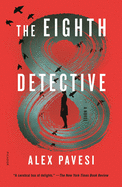
| Publisher: | Picador | |
| Genre: | Mystery & Detective, Crime, Traditional, Fiction, Noir | |
| ISBN: | 9781250798473 | |
| Pub Date: | August 2021 | |
| Price: | $17 |
| Now in Paperback |
by Alex Pavesi
Named a New York Times Top 10 Thriller of 2020, Alex Pavesi's exceptional debut, The Eighth Detective, is at once a novel, a collection of stories and a how-to guide on writing mysteries.
Pavesi introduces professor of mathematics Grant McAllister, who published a research paper in 1937 called "The Permutations of Detective Fiction," which lays out mathematical formulas for mystery stories. There must be a victim, a detective, a killer, at least two suspects, etc. McAllister then wrote seven stories applying variations on those rules and published them in a collection titled The White Murders.
Nearly 30 years later, young editor Julia Hart tracks him down on a remote Mediterranean island with an offer to republish the collection. Since McAllister's eyesight is failing and he wrote the stories so long ago, Julia spends days reading them aloud to him, followed by discussions of each, to refresh his memory. Right away she notices discrepancies in some descriptions, and details too similar to a real-life murder to be coincidences. Why is McAllister evasive every time she asks about them?
The short stories within the novel pay homage to classics penned by the likes of Agatha Christie--one mystery closely resembles And Then There Were None--and some are more surprising than others. Some readers might find Julia and McAllister's postmortem of each story a bit too technical, but wordsmiths will glean nerdy delight from the conversations between author and editor about structure and plotting. It's ironic that McAllister insists every mystery story follows a basic formula, when Pavesi keeps readers guessing with a novel that defies the rules. --Elyse Dinh-McCrillis, blogger at Pop Culture Nerd
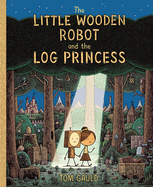
| Publisher: | Neal Porter Books | |
| Genre: | Fantasy & Magic, Fairy Tales, Folklore, Legends & Mythology, Juvenile Fiction, Comics & Graphic Novels, Action & Adventure | |
| ISBN: | 9780823446988 | |
| Pub Date: | August 2021 | |
| Price: | $18.99 |
| Starred | Children's & Young Adult |
by Tom Gauld
The Little Wooden Robot and the Log Princess, London cartoonist Tom Gauld's first picture book for kids, is a charming story about sibling loyalty featuring classic fairy-tale mainstays, including a king, a queen, a witch and a goblin. Despite his old-school cast, Gauld (Department of Mind-Blowing Theories) is committed to revising the fairy-tale script.
The story begins with an interracial royal couple lamenting their childlessness, after which the king asks the (female) royal inventor to create a child; meanwhile, the queen visits a witch in the woods for the same purpose. The inventor builds a wooden robot boy, the witch fashions a princess from a log, and the newfangled royal family is happy. There's a wrinkle, though: when the princess sleeps, she turns back into a log and can become a princess again only when someone says "Awake, little log, awake." Sure enough, the distracted robot neglects to wake his sister the morning a circus visits the castle, and when a maid spies a log in the princess's bed, she tosses it out the window. Upon learning what has happened, the robot boy goes to Augean lengths to find his sister. Readers who presume that the story will proceed as a one-sided rescue effort will be gleefully mistaken.
Drawn with pen and colored digitally, the art in The Little Wooden Robot and the Log Princess has the imprimatur of a practiced cartoonist: exacting characterizations, sure-handed hatching and tidy layouts. The book also has a happy ending--the lone fairy-tale convention to which Gauld surrenders completely. --Nell Beram, freelance writer and YA author

| Publisher: | Dial | |
| Genre: | School & Education, Romance, General, Coming of Age, Young Adult Fiction, LGBTQ+ | |
| ISBN: | 9780593322819 | |
| Pub Date: | August 2021 | |
| Price: | $17.99 |
| Children's & Young Adult |
by Peyton Thomas
Peyton Thomas's auspicious YA debut, Both Sides Now, invites readers into the complicated transition year between parental reliance and university independence. Seniors Finch and Jonah are their Olympia, Wash., debate team headliners. Although they lose the state competition to their private school archnemeses, the pair still qualify for the National Championships. Finch, who narrates in the first person, hopes winning will get him into Georgetown's School of Foreign Service.
Finch knows plenty about uphill battles. His dad's an unemployed alcoholic in recovery and his mom's journalist job is insecure. The two are constantly fighting because money is always tight--not only for college but also for Finch's planned top surgery. Finch is trans, and although his parents are "mostly fine with their daughter becoming their son," they're nothing like Jonah's affectionate, supportive family who love their gay son "so, so much." Jonah is further blessed as the school's drama star's boyfriend of two years. Finch is grateful for his former-girlfriend-turned-bff, but lately she's been making comments about Finch's growing attachment to the unavailable Jonah. Finch thinks she's overreacting but it's possible he doth protest too much....
Thomas writes with effortless ease; his convincing characters have notably diverse traits and he's clear that what they are doesn't necessarily define who they are. Finch is white and while his trans experience is undeniable, he's also a teen who is worried about school and money and who longs for love. Jonah, who is gay and Filipinx American, is trying to balance debate, coupledom and college plans. Without eliding realistic challenges--LGBTQ-phobias, racism, classism--Thomas's cast proves relatably refreshing. --Terry Hong, Smithsonian BookDragon